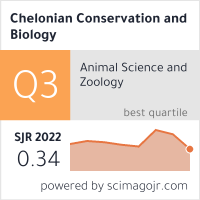INTEGRATING METABOLOMICS AND AROMA CHEMISTRY FOR UNDERSTANDING CAPSICUM VOLATILE PROFILES AND THEIR APPLICATIONS
1Asha M. P.1 and 2Justin R Nayagam*
Abstract
Capsicum species (chilli peppers) display tremendous chemical variation underlying pungency, flavour and aroma. Capsaicinoids contribute to the heat exhibited during tasting, while the many combined oils and volatile organic compounds (VOCs) are important to sensory qualities and bioactivity - but are less understood. This comprehensive review brings the reader up-to-date on the chemistry, biosynthesis and analytical techniques used to analyse oils and VOCs, targeted to essential oils and lipid-derived volatiles including terpenes, fatty acid derivatives, aldehydes, esters (and others), and pyrazines. The contribution of metabolic pathways such as lipoxygenase, terpenoid, and phenylpropanoid pathways (as well as their genetic and environmental control) is discussed. Methods such as HS-SPME-GC-MS, GC×GC-TOF-MS and GC-O are reviewed for their relative sensitivity and reproducibility. In addition to chemistry, Capsicum VOCs have demonstrated ecological and physiological roles in defence, pollination, and an adaptive response to stress, and include further potential for antimicrobial, antioxidant and nutraceutical properties. Although there have been gains in Capsicum research, gaps still remain in our understanding of identifying biosynthetic genes, standardising analytical methods, and the linkages between metabolomic and sensory data. Future studies should shift their focus to integrate and learn from multi-omics studies, harmonise methods, and explore post-harvest transformation, thereby allowing for increased insight into Capsicum in terms of chemical ecology and breeding for aroma, as well as further industrial applications.
Downloads
Published
How to Cite
Issue
Section
License
Copyright (c) 2022 Chelonian Research Foundation

This work is licensed under a Creative Commons Attribution 4.0 International License.






